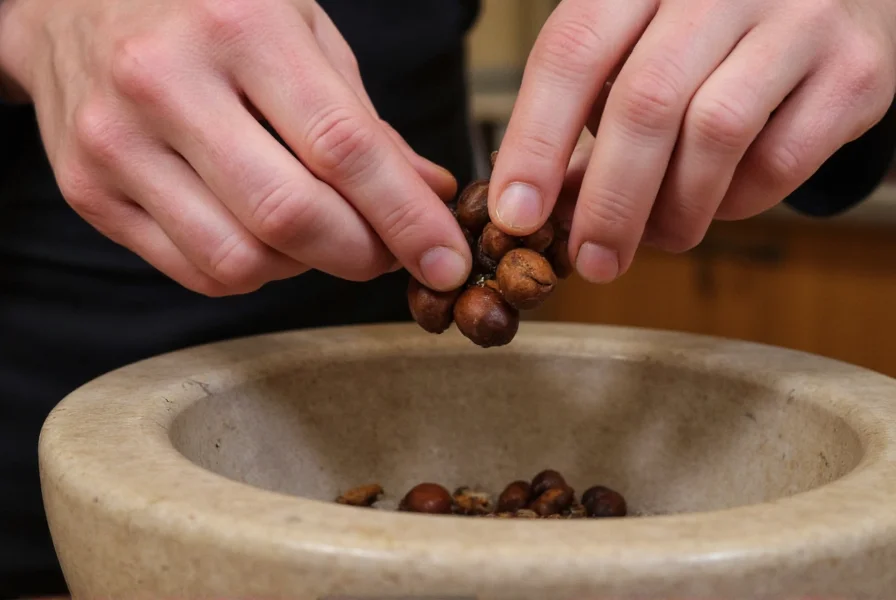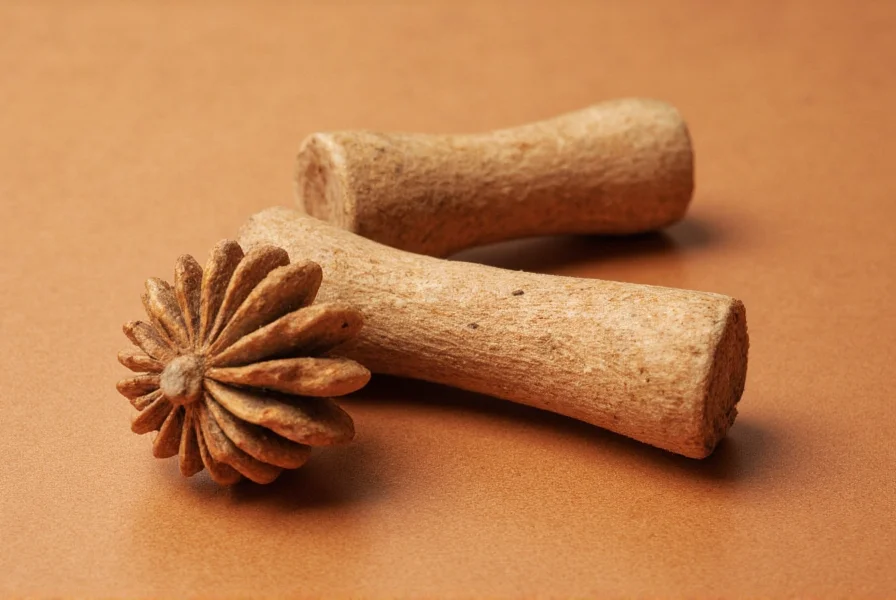Nutmeg and mace represent one of the most fascinating relationships in the spice kingdom. Many home cooks and even professional chefs don't realize these two distinct spices come from the exact same botanical source. Understanding their connection unlocks new dimensions in culinary applications and appreciation for these aromatic treasures.
The Botanical Connection Between Nutmeg and Mace
The Myristica fragrans tree, native to the Banda Islands in Indonesia, produces a fruit that resembles a small apricot when ripe. As the fruit matures, it splits open to reveal the precious components inside. The outer fleshy part is rarely used, but the inner structure contains both spices:
| Component | Location in Fruit | Harvesting Process |
|---|---|---|
| Nutmeg | Inner seed kernel | Removed after drying, then further dried for 6-8 weeks |
| Mace | Red aril surrounding the seed | Separated from nutmeg, flattened, and dried until it becomes brittle and orange-red |
This unique relationship explains why nutmeg and mace share some flavor compounds but express them differently. The drying process transforms mace from bright red to its characteristic amber-orange color, while nutmeg maintains its warm brown appearance.

Flavor Profiles: Understanding the Differences
While related, nutmeg and mace offer distinctly different sensory experiences:
- Nutmeg: Warm, sweet, slightly nutty with earthy undertones. Its flavor is more rounded and mellow.
- Mace: More delicate, with citrusy notes and a sharper, spicier profile. Many describe it as having a more complex flavor with subtle pepper-like qualities.
Chefs often note that mace provides a brighter, more floral dimension compared to nutmeg's deeper warmth. When using nutmeg with mace in recipes, the combination creates a layered spice profile that neither can achieve alone. This understanding of nutmeg and mace relationship is essential for sophisticated seasoning.
Historical Significance and Trade Routes
Historically, mace commanded higher prices than nutmeg in European markets during the spice trade era. This price difference stemmed from practical harvesting considerations—each nutmeg fruit produces only one piece of mace but yields a single nutmeg. The Dutch, who controlled the Banda Islands for centuries, carefully regulated production of both nutmeg and mace to maintain their value.
The botanical connection between nutmeg and mace wasn't widely understood in Europe until the 18th century, leading to separate trade routes and distinct culinary traditions for each spice. This historical separation explains why many traditional recipes specify one spice but not the other, despite their shared origin.
Culinary Applications: When to Use Nutmeg with Mace
Understanding when to use nutmeg with mace can elevate your cooking significantly. While they can substitute for each other (use 1 teaspoon nutmeg for 1¼ teaspoons mace), their optimal applications differ:
- Nutmeg shines in creamy sauces, mashed potatoes, béchamel, and winter squash dishes
- Mace excels in light-colored sauces, fish dishes, pickling, and delicate pastries where its brighter flavor won't overwhelm
- Together, they create complexity in spice blends, holiday baking, and meat rubs
Professional chefs who understand the difference between nutmeg and mace often use them in tandem for layered flavor. For example, adding a pinch of mace to a dish already seasoned with nutmeg can brighten the overall profile without making the spice presence obvious.

Storage and Preparation Best Practices
Both spices benefit from proper storage to maintain their volatile oils. For optimal freshness when using nutmeg with mace:
- Store whole forms in airtight containers away from light and heat
- Grind nutmeg fresh using a microplane for the most aromatic results
- Soak mace blades briefly in warm liquid before use to enhance flavor release
- Use within 6-12 months of grinding for peak flavor (whole spices last 2-3 years)
Many cooks don't realize that the flavor profile of nutmeg compared to mace changes significantly when freshly ground versus pre-ground. The essential oils that give these spices their distinctive aromas evaporate quickly after grinding, making fresh preparation worthwhile for discerning palates.
Nutritional and Medicinal Properties
Both spices contain myristicin, a compound with potential health benefits, though in different concentrations. Mace typically contains higher levels of certain antioxidants than nutmeg. Traditional medicine systems have used both for digestive support and as mild sedatives, though modern research remains limited.
When exploring the culinary uses of nutmeg and mace together, remember that moderation is key—both contain compounds that can be toxic in excessive amounts. The typical culinary quantities used in recipes present no health concerns for most people.
Common Misconceptions Clarified
Several myths persist about these spices:
- Misconception: Mace is just powdered nutmeg Reality: They come from different parts of the same fruit
- Misconception: They can be used interchangeably in equal amounts Reality: Mace is more potent; use about 20% less when substituting
- Misconception: Nutmeg is always preferable to mace Reality: Each has ideal applications based on the dish
Understanding the botanical connection between nutmeg and mace helps dispel these common errors and leads to more informed spice selection in the kitchen.











 浙公网安备
33010002000092号
浙公网安备
33010002000092号 浙B2-20120091-4
浙B2-20120091-4